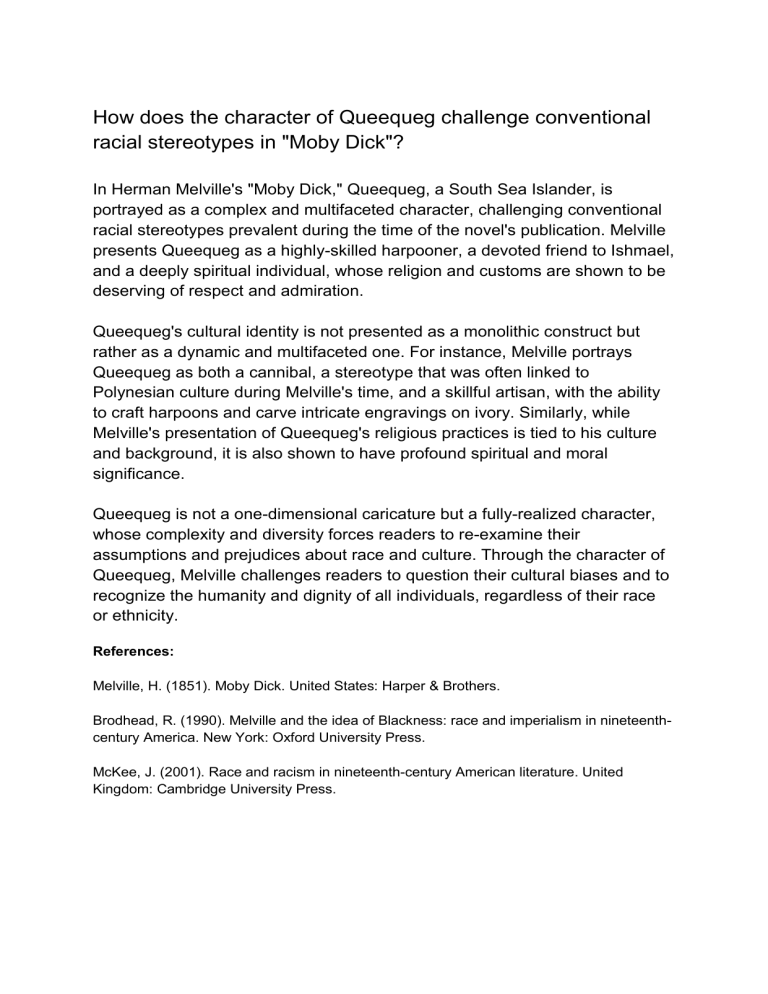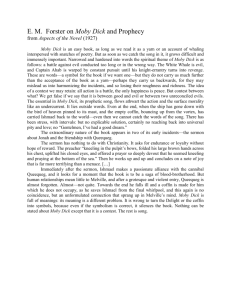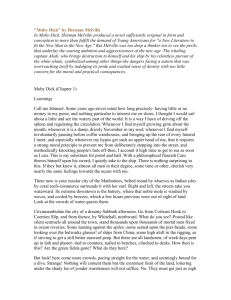How does the character of Queequeg challenge conventional racial stereotypes in Moby Dick
advertisement

How does the character of Queequeg challenge conventional racial stereotypes in "Moby Dick"? In Herman Melville's "Moby Dick," Queequeg, a South Sea Islander, is portrayed as a complex and multifaceted character, challenging conventional racial stereotypes prevalent during the time of the novel's publication. Melville presents Queequeg as a highly-skilled harpooner, a devoted friend to Ishmael, and a deeply spiritual individual, whose religion and customs are shown to be deserving of respect and admiration. Queequeg's cultural identity is not presented as a monolithic construct but rather as a dynamic and multifaceted one. For instance, Melville portrays Queequeg as both a cannibal, a stereotype that was often linked to Polynesian culture during Melville's time, and a skillful artisan, with the ability to craft harpoons and carve intricate engravings on ivory. Similarly, while Melville's presentation of Queequeg's religious practices is tied to his culture and background, it is also shown to have profound spiritual and moral significance. Queequeg is not a one-dimensional caricature but a fully-realized character, whose complexity and diversity forces readers to re-examine their assumptions and prejudices about race and culture. Through the character of Queequeg, Melville challenges readers to question their cultural biases and to recognize the humanity and dignity of all individuals, regardless of their race or ethnicity. References: Melville, H. (1851). Moby Dick. United States: Harper & Brothers. Brodhead, R. (1990). Melville and the idea of Blackness: race and imperialism in nineteenthcentury America. New York: Oxford University Press. McKee, J. (2001). Race and racism in nineteenth-century American literature. United Kingdom: Cambridge University Press.




